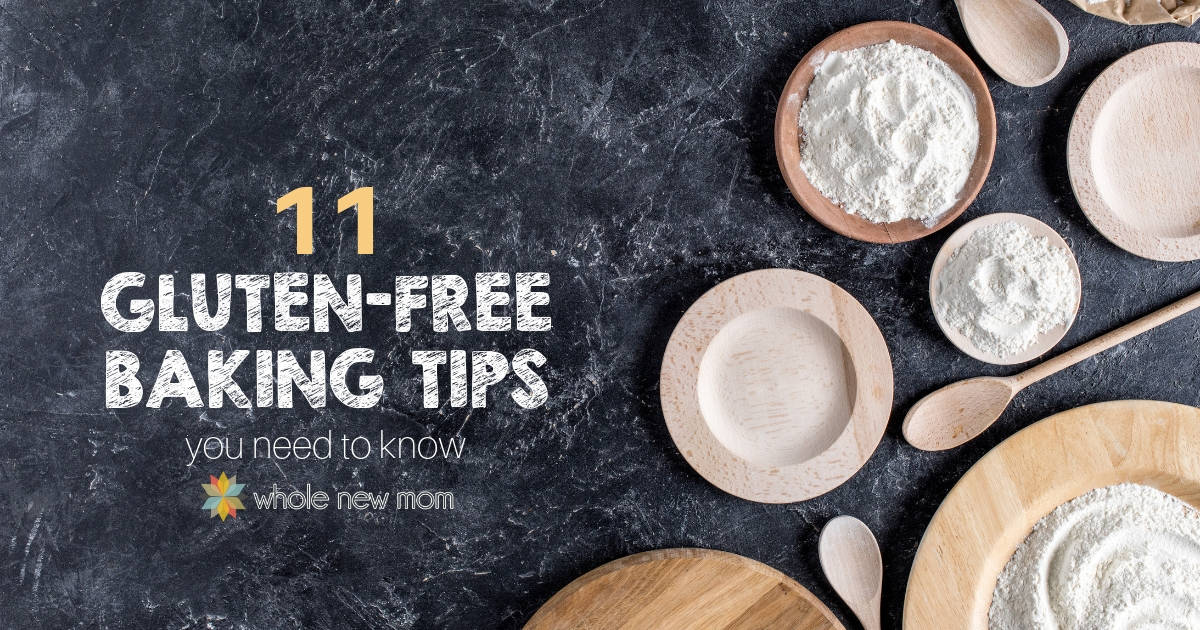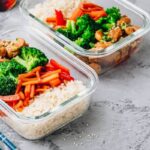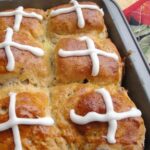Unlock the secrets to flawlessly delicious gluten-free baking! Imagine the rich aroma of freshly baked bread, the moist crumb of a perfect cake, the satisfying crunch of a delightful cookie – all without gluten. This journey will guide you through the nuances of gluten-free flour blends, the precision of baking techniques, and the art of recipe adaptation, transforming your kitchen into a haven of gluten-free culinary delights. Prepare to conquer the challenges and unlock the boundless possibilities of gluten-free baking, creating treats that are not only delicious but also visually stunning.
We’ll delve into the properties of various gluten-free flours, exploring their unique textures and baking behaviors. Learn how to master measuring techniques, leverage binding agents like xanthan gum, and troubleshoot common issues such as dryness or gummy consistency. Through detailed recipes and step-by-step instructions, you’ll gain the confidence to bake gluten-free masterpieces, impressing yourself and others with your newfound skills. Get ready to experience the joy of creating exquisite gluten-free baked goods that are both beautiful and unbelievably tasty.
Exploring Gluten-Free Baking Recipes
Embarking on a gluten-free baking journey can be both rewarding and challenging. Mastering the art requires understanding the unique properties of gluten-free flours and adapting techniques to achieve desired textures and flavors. This section delves into three distinct gluten-free recipes, providing detailed instructions and sensory descriptions to guide you towards baking success.
Gluten-Free Banana Bread
This recipe delivers a moist, subtly sweet banana bread with a tender crumb, perfect for breakfast or a comforting snack. The visual appeal is a golden-brown loaf with evenly distributed banana flecks throughout. The aroma is reminiscent of warm baked bananas and spices, creating a welcoming and comforting atmosphere. The texture is soft and moist, with a slight springiness that is characteristic of a well-made banana bread.
| Ingredient | Quantity | Ingredient | Quantity |
|---|---|---|---|
| Gluten-free all-purpose flour blend | 2 cups | Baking soda | 1 teaspoon |
| Granulated sugar | ¾ cup | Salt | ½ teaspoon |
| Eggs | 2 large | Ground cinnamon | 1 teaspoon |
| Mashed ripe bananas | 1 ½ cups | Vegetable oil | ⅓ cup |
| Vanilla extract | 1 teaspoon | Walnuts or pecans (optional) | ½ cup, chopped |
Instructions: Preheat oven to 350°F (175°C). Grease and flour a 9×5 inch loaf pan. In a large bowl, whisk together flour, sugar, baking soda, salt, and cinnamon. In a separate bowl, mash bananas and whisk in eggs, oil, and vanilla. Add wet ingredients to dry ingredients and mix until just combined. Stir in nuts (if using). Pour batter into prepared pan and bake for 50-60 minutes, or until a wooden skewer inserted into the center comes out clean. Let cool in pan for 10 minutes before transferring to a wire rack to cool completely.
Nutritional Information (per slice, approximate): Calories: 250, Fat: 10g, Carbohydrates: 35g, Protein: 4g.
Gluten-Free Chocolate Cake
This decadent chocolate cake boasts a rich, intensely chocolatey flavor with a moist and velvety crumb. The ideal appearance is a flawlessly smooth, dark brown surface, possibly adorned with chocolate ganache or frosting. The aroma is deeply chocolatey, with hints of vanilla and cocoa. The texture is remarkably moist and tender, melting in the mouth with each bite.
| Ingredient | Quantity | Ingredient | Quantity |
|---|---|---|---|
| Gluten-free all-purpose flour blend | 2 cups | Unsweetened cocoa powder | ¾ cup |
| Granulated sugar | 1 ½ cups | Baking powder | 2 teaspoons |
| Eggs | 2 large | Salt | ½ teaspoon |
| Buttermilk | 1 cup | Vegetable oil | ⅓ cup |
| Vanilla extract | 1 teaspoon | Boiling water | 1 cup |
Instructions: Preheat oven to 350°F (175°C). Grease and flour two 9-inch round cake pans. In a large bowl, whisk together flour, sugar, cocoa powder, baking powder, and salt. In a separate bowl, whisk together eggs, buttermilk, oil, and vanilla. Gradually add wet ingredients to dry ingredients, mixing until just combined. Slowly pour in boiling water and mix until smooth. Divide batter evenly between prepared pans and bake for 30-35 minutes, or until a wooden skewer inserted into the center comes out clean. Let cool in pans for 10 minutes before inverting onto wire racks to cool completely.
Nutritional Information (per slice, approximate): Calories: 300, Fat: 12g, Carbohydrates: 40g, Protein: 5g.
Gluten-Free Oatmeal Raisin Cookies
These cookies offer a classic taste with a satisfying chewiness. The visual is a golden-brown cookie with visible oatmeal and raisins scattered throughout, exhibiting a slightly cracked top. The aroma is warm and inviting, with notes of baked oatmeal and sweet raisins. The texture is chewy and slightly crisp on the edges, with a pleasing soft interior.
| Ingredient | Quantity | Ingredient | Quantity |
|---|---|---|---|
| Gluten-free rolled oats | 1 ½ cups | Brown sugar | ¾ cup |
| Gluten-free all-purpose flour blend | 1 cup | Baking soda | 1 teaspoon |
| Butter, softened | ½ cup | Salt | ½ teaspoon |
| Granulated sugar | ½ cup | Eggs | 1 large |
| Vanilla extract | 1 teaspoon | Raisins | 1 cup |
Instructions: Preheat oven to 375°F (190°C). Line baking sheets with parchment paper. In a large bowl, cream together butter and sugars until light and fluffy. Beat in egg and vanilla. In a separate bowl, combine oats, flour, baking soda, and salt. Gradually add dry ingredients to wet ingredients, mixing until just combined. Stir in raisins. Drop by rounded tablespoons onto prepared baking sheets. Bake for 10-12 minutes, or until edges are golden brown. Let cool on baking sheets for a few minutes before transferring to a wire rack to cool completely.
Nutritional Information (per cookie, approximate): Calories: 150, Fat: 7g, Carbohydrates: 20g, Protein: 2g.
Advanced Gluten-Free Baking Techniques

Mastering gluten-free baking often requires venturing beyond basic recipes. This section delves into advanced techniques that elevate gluten-free creations from satisfactory to spectacular, addressing key aspects that significantly impact the final product’s quality. Understanding these techniques allows for greater control and consistency in your gluten-free baking endeavors.
Leavening Agent Selection and Application in Gluten-Free Baking
The choice of leavening agent profoundly affects the rise and texture of gluten-free baked goods. Unlike gluten-containing doughs, which rely on gluten’s elastic properties for structure, gluten-free recipes heavily depend on the proper function of leavening agents to achieve adequate volume and a light crumb. Using a combination of leavening agents is often key to success.
- Baking Powder: Provides immediate lift through the reaction of an acid and a base. Double-acting baking powder offers a longer, slower release of gas, ideal for many gluten-free recipes.
- Baking Soda: Requires an acidic ingredient (like lemon juice or buttermilk) to activate. It provides a quick, powerful rise and contributes to a chewier texture.
- Yeast: Used for gluten-free breads, yeast requires time to ferment and produce carbon dioxide, resulting in a more complex flavor and texture. Careful temperature control is crucial for successful yeast activation in gluten-free doughs.
The Impact of Moisture Content on Gluten-Free Baked Goods
Moisture plays a critical role in gluten-free baking, influencing texture, crumb structure, and overall quality. Too much moisture can result in dense, gummy products, while insufficient moisture leads to dryness and crumbliness. The ideal moisture level depends on the specific recipe and ingredients used.
Precise measurement of liquids is paramount in gluten-free baking. Even small variations can significantly alter the final outcome.
Many gluten-free flours absorb liquids differently than wheat flour. Experimentation and careful attention to the recipe’s instructions are essential to achieving the desired moisture balance. For example, using a scale to measure ingredients instead of relying solely on volume measurements can lead to more consistent results.
Methods for Improving the Rise and Texture of Gluten-Free Bread
Achieving a good rise and texture in gluten-free bread is a common challenge. Several techniques can significantly improve results. These techniques address the lack of gluten’s elasticity and strength, which are crucial for structure in traditional bread.
- Adding Binding Agents: Ingredients like xanthan gum, guar gum, or psyllium husk provide structure and elasticity, mimicking some of gluten’s functions. These agents help create a more cohesive dough and prevent crumbling.
- Using a Combination of Flours: Blending different gluten-free flours, such as rice flour, almond flour, tapioca starch, and potato starch, can create a more balanced texture and improve the bread’s overall quality. Each flour contributes unique properties to the final product.
- Proper Kneading and Fermentation: Gentle kneading, if the recipe calls for it, helps to develop the dough’s structure. Adequate fermentation time allows the leavening agents to work effectively, contributing to a better rise.
Utilizing Alternative Ingredients to Enhance Gluten-Free Baking
A wide range of alternative ingredients can enhance the taste, texture, and nutritional value of gluten-free baked goods. Careful selection and understanding of their properties are essential for successful application.
- Starches: Tapioca starch, potato starch, and cornstarch contribute lightness and tenderness. They are often used in combination with other flours to balance the texture.
- Fibers: Psyllium husk, inulin, and flaxseed meal add moisture and improve binding, contributing to a more cohesive and less crumbly texture. They also offer added nutritional benefits.
- Nuts and Seeds: Almond flour, coconut flour, and sunflower seed flour add flavor, nutrients, and a slightly denser texture. They can be used in part or in whole to replace other flours.
Mastering gluten-free baking is a rewarding journey, one filled with delicious discoveries and the satisfaction of creating delectable treats for yourself and others. By understanding the unique properties of gluten-free flours, mastering essential techniques, and adapting recipes with confidence, you’ll unlock a world of culinary possibilities. So, embrace the challenge, experiment with different flours and techniques, and enjoy the process of creating beautiful and scrumptious gluten-free baked goods. The journey to perfect gluten-free baking is filled with sweet successes, and this guide is your key to unlocking them.
FAQ Resource
Can I substitute one gluten-free flour for another?
While some substitutions are possible, results may vary. Different flours have different properties; experimenting is key, but be prepared to adjust recipes accordingly.
How long do gluten-free baked goods last?
This depends on the recipe and storage. Properly stored, most gluten-free baked goods will last 3-5 days at room temperature or up to a week refrigerated.
Why is my gluten-free bread dense?
This could be due to insufficient leavening, incorrect measuring, or using too much liquid. Check your recipe and technique for potential issues.
Are all gluten-free products healthy?
Not necessarily. Many gluten-free products are highly processed and may be high in sugar or unhealthy fats. Opt for recipes using whole grains and natural sweeteners.


